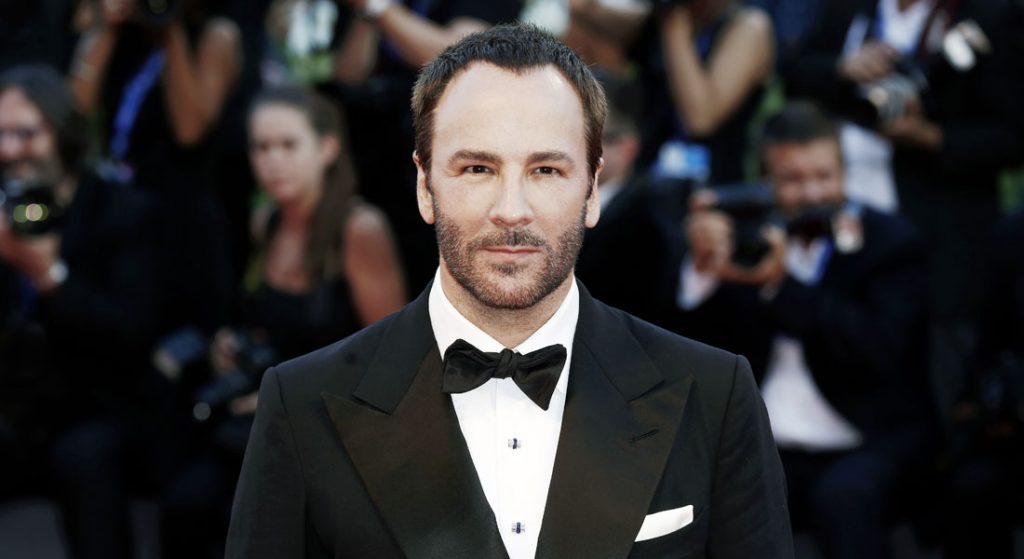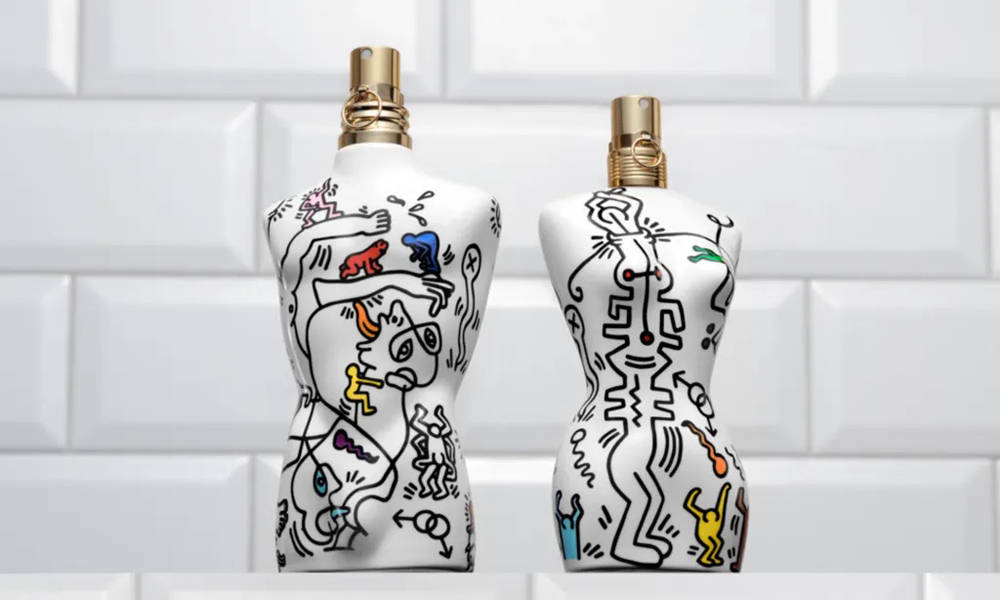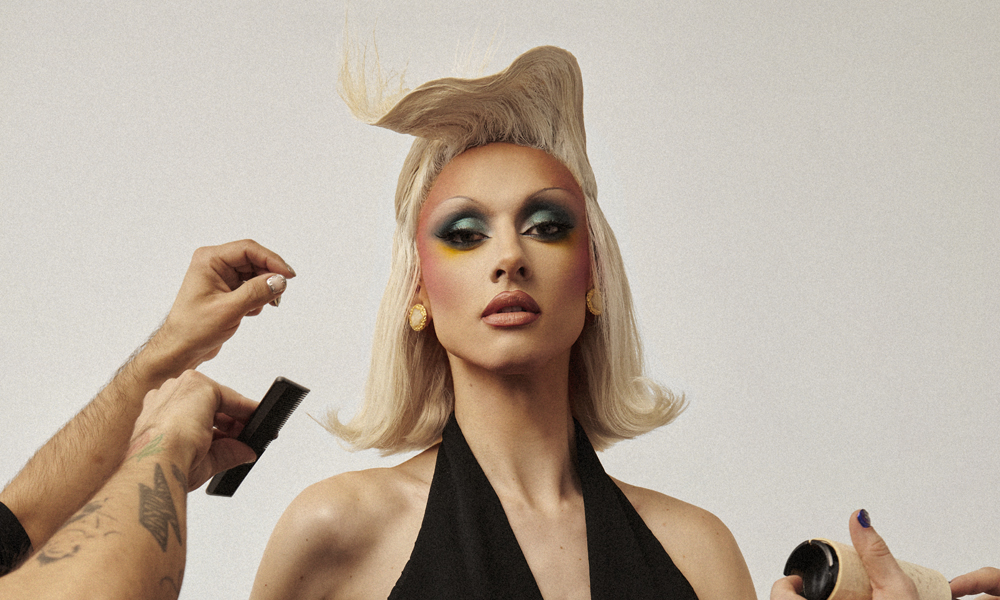The designer-turned-director is setting trends and breaking boundaries every chance he gets…
By Christopher Turner
Few designers in the world are more renowned than Tom Ford. For more than 30 years, he has had an unwavering ability to stay in the spotlight. From his high-profile gigs at Gucci and Yves Saint Laurent through to his eponymous label and over to Hollywood, he’s been tantalizing—and shocking—fans for decades. But, as Ford heads into both a new year and an awards season (his latest directorial effort, Nocturnal Animals, came out in November), he’s showing no signs of slowing down.
Thomas Carlyle Ford’s inability to circumvent his drive and determination can be tracked back to his Presbyterian upbringing in Texas, where he took an early interest in fashion, beauty and design. “I was always very visual, always interested in design,” he recalls. “I don’t mean that I sat around at age five sketching clothes, but if my parents went out to dinner and left me alone, I would rearrange all the living room furniture before they came back.” Ford says his parents encouraged him to do anything and everything creative: “If I wanted art lessons, they found paint and a teacher.”
While studying architecture at the Paris campus of the Parsons School of Design, Ford decided to switch to fashion. That decision ultimately changed fashion history and put Ford on a somewhat unplanned journey to fashion stardom.
Of course, it wasn’t instant notoriety. Vogue’s Sarah Mower remembers that Gucci’s publicist had to beg fashion editors to attend Ford’s debut show when he assumed the role of womenswear designer in 1990. He ascended quickly through Gucci’s ranks, rising to design director in just two years and to creative director in 1994 when the brand was near bankruptcy—previous chief designer Dawn Mello had walked out and rejoined Bergdorf Goodman as Gucci’s sales plummeted. Known for leather goods and logo scarves, the Italian fashion house (founded by Guccio Gucci in Florence in 1921) desperately needed a new image if it was going to survive, so Ford—then just 32 years old—was given total carte blanche, which was unheard of at the time.
The move was controversial, as members of the Italian fashion press screamed that it was sacrilegious for an unknown American designer to take the reins at a heritage Italian brand. But the appointment ultimately saved Gucci and, after Ford’s triumphant Fall/Winter 1995 collection was sent down the runway, his inexperience was forgotten. That ’70s-tinged collection, now synonymous with Ford’s time with Gucci, featured barely-but-toned jewel-tone satin shirts that signalled a chic new direction for the brand. The fashion press loved the updated retro looks that replaced the minimalism of the early 1990s, but it wasn’t until the brand earned an endorsement from Madonna (who wore the collection’s key look to the 1995 MTV Video Music Awards) that Gucci cemented the message that it was back…and all about glamour and sex.
This super-slick new direction dominated headlines as the brand rolled out scandalous ad campaigns, which were often shot by the iconic fashion photographer Mario Testino and styled by Carine Roitfeld, the former editor-in-chief of Vogue Paris. Ford was behind it all, and rapidly becoming fashion’s greatest provocateur.
“I am a perfectionist,” Ford said in 1996. “This job is a total ego thing in a way. To be a designer and say, ‘This is the way they should dress; this is the way their homes should look; this is the way the world should be.’ But then, that’s the goal: world domination through style.”
While Ford was still designing for Gucci, the brand began to work towards acquiring the venerable Saint Laurent fashion house. Ford himself had looked to Yves Saint Laurent’s work—especially from the 1970s—as inspiration for the sexy tuxedo looks and bohemian details that dominated his Gucci runway shows. When Gucci (then owned by Pinault Printemps Redoute) finally took over the YSL brand in 1999, they fired the brand’s charismatic creative director, Alber Elbaz, and promptly named Ford the creative director for the French fashion house. The goal was to follow the Gucci formula and reinvent the brand, much to the displeasure of its founder. “The poor man does what he can,” commented Yves Saint Laurent on Ford’s overtly sexy designs.
Ford didn’t get along with Saint Laurent or Saint Laurent’s former life partner/long-time business partner, Pierre Bergé. The press and the customers, on the other hand, loved Ford’s sensual updates to key YSL classics, including the iconic Le Smoking. And Ford is credited, more so than Elbaz, with rejuvenating the French brand with his signature sex appeal and innovative marketing skill during his eight seasons there.
But the partnership was not to last. Ford walked away from Gucci and YSL in 2004 after François Pinault of PPR (now Kering) took total control. It was an acrimonious and very public parting of the ways between the two. At the time, Ford told the press that he had no interest in returning to fashion and that he might turn his creativity to other activities. Later, in an interview with Women’s Wear Daily, Ford confirmed: “Money had absolutely nothing to do with it at all. It really was a question of control.”
Ford, of course, would return to the fashion world. A year after his tumultuous battle with Pinault, he began his self-branded fashion empire, which initially offered menswear, eyewear and fragrances. It was to be expected: after all, the man is his own brand ambassador, muse and model. When he is not naked—his preferred state at home—he is “Tom Ford,” wearing that signature slim-fit dark suit that is tailored to perfection with an elegantly unbuttoned crisp white shirt. Not since Coco Chanel has a fashion designer so singularly embodied the spirit of a luxury lifestyle.
Moving onto the big screen
In 2009, Ford made a foray into Hollywood with his debut film A Single Man, which he co-wrote, produced and directed. Although the idea for the story came from Christopher Isherwood’s 1964 novel of the same name, Ford heavily tweaked the characters in the film, making them nearly autobiographical. The suicide that George (Colin Firth’s character) constructs in the film is a replica of a suicide in Ford’s family, and his stylish grandmother served as the inspiration for Charley, played by Julianne Moore. More importantly, like George, Ford admittedly went through his own share of difficult times, years before the film was made. “There is much of me in my version of George,” he says. “A kind of spiritual crisis at mid-life comes to many people. I achieved much in the material world at a very early age: financial security, fame, professional success, more material possessions than I knew what to do with. I had a full personal life, a wonderful life partner of 23 years, two great dogs and lots of friends—but somehow I lost my way a bit. As a fashion designer, one spends one’s life living in the future designing collections several years ahead of when they will actually be in stores. Our culture encourages a belief that all of our problems can be solved with material things. I had completely neglected the spiritual side of my life.”
A Single Man not only landed Ford on Hollywood’s radar as an exciting voice in contemporary cinema, but it won wide critical acclaim, garnering Firth an Academy Award nomination for Best Actor and Ford an Independent Spirit Award nomination for Best First Screenplay in 2010.Ford has taken his time putting together his follow-up feature, but he hasn’t exactly been idle. Since A Single Man, he has opened 100 new stores worldwide, and married his long-time love, journalist Richard Buckley, with whom he welcomed a son, Alexander, in 2012.
Still, film fans rejoiced when Ford’s long-awaited second feature film, Nocturnal Animals, was released in December. It’s a clever, beautifully shot psychological thriller that ingeniously tells three stories at once. It became one of the most anticipated releases of 2016 after being a hot item at Cannes two years ago, with Focus Features eventually winning the bidding war to the tune of $20 million, one of the biggest movie deals in recent history.
In adapting Austin Wright’s 1993 novel Tony and Susan, Ford has done a superb job. Nocturnal Animals stars Amy Adams as Susan, a deeply unhappy artist who receives a novel manuscript, likewise titled “Nocturnal Animals,” written by her ex-husband Tony, played by Jake Gyllenhaal. While Oscar nominations won’t be announced until January 24, 2017, critics almost unanimously agree that the film’s stylish aesthetic and raw performances—which received standing ovations at the Venice Film Festival and the Toronto International Film Festival—will put the film in the Oscar race. [Editor’s note: At press time, Nocturnal Animals had been nominated for three Golden Globe Awards. Ford is nominated for Best Director and Best Screenplay, while Aaron Taylor-Johnson was nominated for Best Supporting Actor.]
What’s next for Ford? Well, he’s already back designing future men’s, women’s and accessories collections for his namesake brand and, hopefully, he’s dreaming of his next cinematic endeavour. During the press junkets for Nocturnal Animals, Ford repeatedly mentioned that he already has two scripts he has written, but he isn’t sure if either will become a reality.
YOU MUST REMEMBER THIS
6 key moments from Tom Ford’s glittering career

1995: Revitalizes Gucci
“Someone asked Madonna on camera what she was wearing [at the MTV Video Music Awards in 1995] and she said, ‘Gucci, Gucci, Gucci.’ That was really the beginning,” Tom Ford explained in his coffee table book published in 2008.
2000: YSL ad controversy
Ford was praised for updating key YSL classics when he was named creative director, but he stirred controversy with his Opium fragrance ad, which featured Sophie Dahl in nothing but white paint, jewellery and heels.
2006: Launches his eponymous label
Ford parted ways with the Gucci Group in April 2004; it played out like a nasty divorce. Ford got his revenge when he launched a wildly successful line of mens-wear, beauty, eyewear and accessories in 2006, simply named “Tom Ford.”
2009: A Single Man
When Ford decided to try his hand at directing, the results were stunning. A Single Man starred Colin Firth and Julianne Moore, and was adapted from Christopher Isherwood’s novel about a gay man’s grief after his partner is killed in a car accident.
2013: “Tom Ford” raps on
“I don’t pop molly/I rock Tom Ford,” raps Jay Z on the Magna Carta Holy Grail song that bears his name. “Tom Ford” served as the second single from the rapper’s 12th studio album.
2015: Shaking up the fashion world…again
Ford said goodbye to the runway and presented his Spring 2016 collection on the small screen with a fashion film shot by Nick Knight. The soundtrack featured Nile Rodgers’ ’70s hit for Chic “I Want Your Love,” rerecorded by Lady Gaga.
CHRISTOPHER TURNER acted as guest editor for this issue of IN Magazine. He is a Toronto-based writer, editor and lifelong fashionisto with a passion for pop culture and sneakers. Follow him on social media at @Turnstylin.






POST A COMMENT